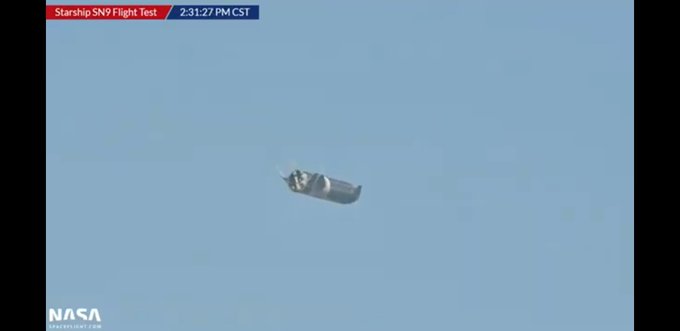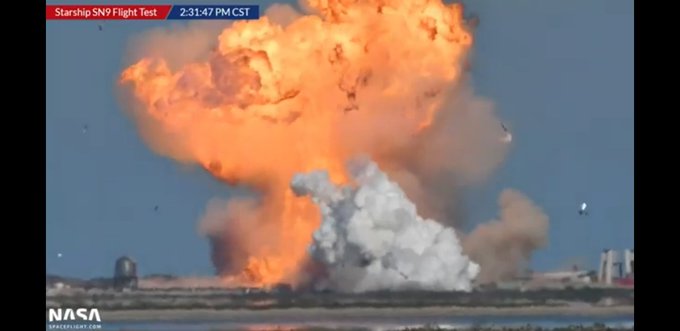
The latest prototype of SpaceX's next-generation Starship rocket exploded after it attempted to land, following a development test flight.
Earlier today, SpaceX was carrying out a high-altitude flight test of Starship serial number 9 (SN9), with the company saying it was 'the second high-altitude suborbital flight test of a Starship prototype from our site in Cameron County, Texas'.
Advert
A live stream of the flight showed how the rocket launched successfully, but exploded on impact when it made an attempt to land.
Speculating why the landing may have ended so badly, one Twitter user suggested: "Looks like it was turned, and not vertical as it attempted the landing."
Another said: "It looks like they just wait too long to flip it upright and turn the engine on. It looks like it is coming in too fast and they start the landing too late."
SpaceX principal integration engineer John Insprucker commented on SpaceX's livestream of the test flight: "We had, again, another great flight up. We've got a lot of good data on flap control, we've just got to work on that landing a little bit."
Advert
Ahead of today's flight, SpaceX outlined its plans to fly 'approximately 10km' in altitude, with SN9 powered through its ascent by three Raptor engines, each 'shutting down in sequence prior to the vehicle reaching apogee'.
A post on its website explained the planned process for its landing, saying: "The Starship prototype will descend under active aerodynamic control, accomplished by independent movement of two forward and two aft flaps on the vehicle.
"All four flaps are actuated by an onboard flight computer to control Starship's attitude during flight and enable precise landing at the intended location.
"SN9's Raptor engines will then reignite as the vehicle attempts a landing flip maneuver immediately before touching down on the landing pad adjacent to the launch mount.
Advert
"A controlled aerodynamic descent with body flaps and vertical landing capability, combined with in-space refilling, are critical to landing Starship at destinations across the solar system where prepared surfaces or runways do not exist, and returning to Earth.
"This capability will enable a fully reusable transportation system designed to carry both crew and cargo on long-duration, interplanetary flights and help humanity return to the Moon, and travel to Mars and beyond."
The flight was similar to the one one SpaceX conducted back in December, when it launched prototype SN8 on the highest and longest flight to date.
That one also made an explosive landing when it arrived back to Earth.
Advert
Better luck next time, let's hope.
Featured Image Credit: SpaceX


